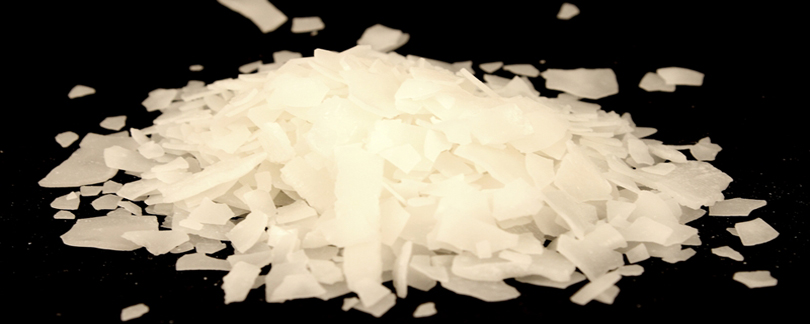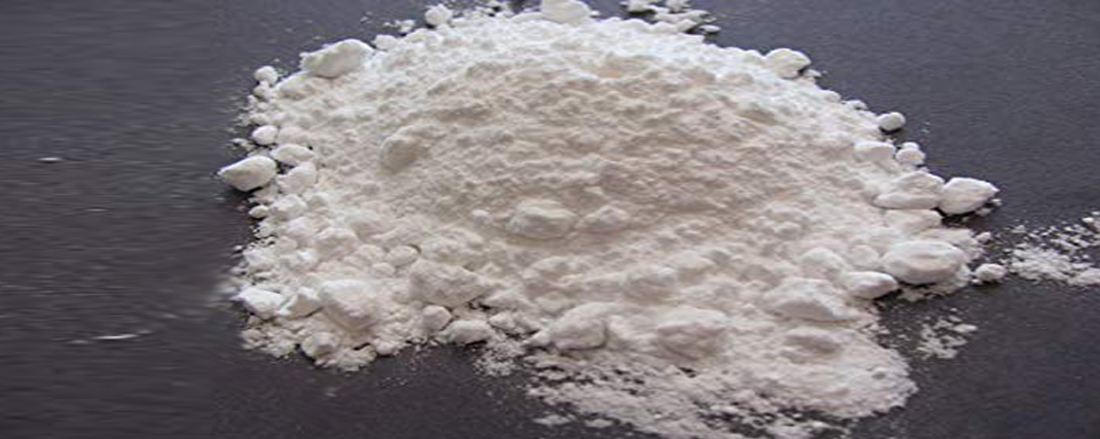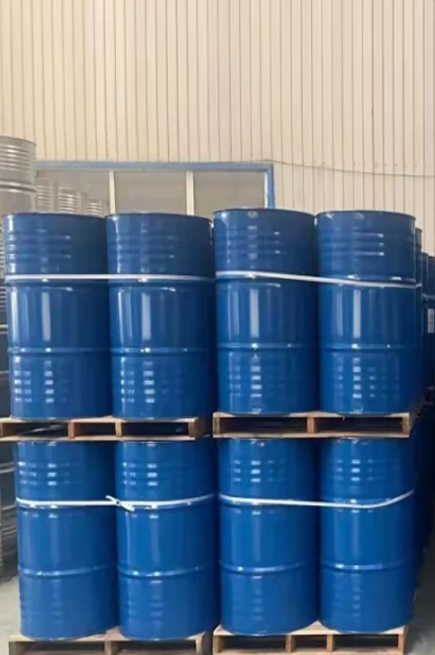Peracetic acid supplier and Exporter from INDIA.
A water like clear & colorless liquid. An aqueous equilibrium solution containing peracetic acid, Hydrogen peroxide, acetic acid and special stabilizers. This product is considered environmentally safe since it decomposes to acetic acid and oxygen. Acetic acid is completely biodegradeable.
Oxidizing agent, causes severe burns. May cause fire. Harmful by Inhalation, in contact with skin and if swallowed.
HEALTH HAZARD INFORMATION SHEET Peroxyacetic Acid (PAA)
Peroxyacetic acid (also known as peracetic acid or PAA) is an organic peroxide based, colorless liquid with a low pH and a strong, pungent, vinegar-like odor. In the concentrated form it is highly corrosive and unstable. PAA is formed from the reaction of acetic acid and hydrogen peroxide. Commercial PAA products contain all three chemicals in an aqueous solution often with stabilizers added. The concentration of PAA as the active ingredient, as well as the mixture of the other ingredients, can vary widely.
PAA is used in food and beverage industries as well as hospitals, health care and pharmaceutical facilities as an antimicrobial agent, surface cleaner and sanitizer. In many meat and poultry establishments it is used on carcasses, parts, trim and organs to reduce bacterial contamination and foot spoilage. It can be applied by a variety of methods including spray cabinet, dip tank, hand spray pump and chiller.
How are FSIS employees potentially exposed to PAA in their workplaces?
FSIS employees can potentially be exposed to PAA when it is used as an antimicrobial or acidifier in ways that fail to properly contain or ventilate the product. The following are some examples of how IPP could potentially be exposed if controls are not properly in place:
-
Off-gassing from chillers;
-
Over spray from spray cabinet openings and high nozzle pressure;
-
Lack of local exhaust ventilation on spray cabinets;
-
Inadequate ventilation in kill floor area;
-
Direct discharge of waste solution from cabinets and tanks directly onto the floor;
-
Failure to properly control solution pH;
-
Chemical mixing in floor drains; and
-
Hand application with spray tanks.
The latest version of FSIS Directive 7120.1, “Safe and Suitable Ingredients Used in the Production of Meat, Poultry, and Egg Products”, contains a list of PAA containing substances and the concentrations that may be used for specific purposes in meat, poultry and egg product establishments. PAA solutions are currently approved for use in PAA concentrations ranging from 50 to 2,000 parts per million (ppm).
ESHG-Health-03.00 FSIS Environmental, Safety and Health Group (ESHG) 1
What are the potential health effects of exposure to PAA?
Concentrated forms of PAA solution are corrosive and exposure can cause irreversible damage to skin and eyes. When PAA is used in establishments for antimicrobial applications, it is used in diluted concentrations (ranging from 50 to 2,000 ppm in solution). Exposure to PAA in the dilute form as a vapor or mist may sometimes cause eye, nose, throat and respiratory irritation that usually subsides when exposure ceases. Currently, there is no correlation between a specific concentration in solution and the resulting concentration in air or the level of irritation expected. IPP should be aware that, in general, pre-existing respiratory conditions may be aggravated by exposure to airborne irritants.
What OSHA Standards and exposure guidelines apply to PAA?
There are no specific OSHA standards for PAA. The American Conference of Governmental Hygienists (ACGIH) recommends a Threshold Limit Value (TLV) of 0.4 ppm, as a 15-minute Short Term Exposure Limit (STEL). ACGIH also does not consider PAA to be classifiable as a human carcinogen.
The ACGIH TLV is currently used in the meat and poultry industry as a general guideline for determining PAA health exposures. Therefore, when airborne concentrations of PAA exceed this value, action should be taken to limit exposure by leaving the work area until the reason for the elevated concentration can be identified and resolved.
The National Institute for Occupational Safety and Health (NIOSH) is in the process of determining the concentration of PAA that should be considered Immediately Dangerous to Life and Health (IDLH). This document will be updated with that value when it is published.
How are occupational exposures to PAA monitored or measured?
There are no validated OSHA or NIOSH air sampling methods for PAA. Both agencies are investigating and developing a reliable method. This document will be updated when more information if available.
ESHG-Health-03.00 FSIS Environmental, Safety and Health Group (ESHG) 2
There are also several portable, direct reading monitors which are commercially available for sampling PAA. However, these monitors are not specific for PAA but can react to many types of oxidizing chemicals (such as chlorine, ozone and hydrogen peroxide). The monitor sensors are also sensitive to water, humidity and temperature making them difficult to use reliably in many establishments where PAA is used. The FSIS Environmental, Safety and Health Group (ESHG) is currently evaluating these monitors for use in the field.
What safety precautions can be followed to protect FSIS employees against exposure to PAA?
The most effective ways to prevent over-exposure to PAA is to minimize the amount of vapor, mist or droplets that come into direct contact with employees by providing adequate containment, ventilation, and process controls.
Some potential controls that establishments can put in place to minimize exposure are :
• Spray cabinets can be enclosed enough so that significant amounts of mists or droplets are not released through the entrance or exit to the cabinet.
• Local exhaust ventilation can be used to remove mists directly from the
cabinets.
• Clear plastic or stainless steel shields can be used to deflect spray from
contacting inspectors.
• Spray cabinets can be installed as far as practical from inspection stations. • Closed drain lines can be used for wastewater discharges from the cabinets
to the floor drains.
• If there is an issue with chemical mixing in floor drains, a dedicated drain line in the floor troughs can be used to carry the wastewater to an area where discharge will not cause safety issues.
• Adequate general ventilation can be provided using properly designed exhaust fans and fresh air supply units.
• PAA solutions can be monitored and controlled for concentration, pH, and temperature to reduce off-gassing, as specified by the system supplier.
How can an IIC ensure compliance with the OSHA Hazard Communication Standard for this Chemical?
1. The IIC is responsible for ensuring that the requirements of FSIS Directive 4791.5, “Hazard Communication Program” are met.
This includes:
ESHG-Health-03.00 FSIS Environmental, Safety and Health Group (ESHG) 3
• Ensuring the List of Hazardous Chemicals used or stored on site is available in the USDA office as required by Directive 4791.5 Attachment 1 Section II. This list is usually limited to antimicrobials, sanitizers, and refrigerants.
• The Safety Data Sheet (SDS) library location is noted on the signature page of Directive 4791.5 Attachment 1.
• Ensuring hazardous chemical containers are appropriately labeled.
2. The IIC is to provide training to all FSIS employees (including relief inspectors) for all chemical hazards in the workplace. Training includes:
-
Allowing IPP access to and time to read the SDS.
-
The location of hazardous chemicals that IPP may be exposed under routine and emergency conditions.
• Monitoring systems (if any) used to detect the presence or release of a hazardous chemical in the work area.
• How IPP can identify the presence or release of a hazardous chemical (e.g. visual appearance or odor of chemicals).
-
The location of the required list of chemicals.
-
The location of the SDS library.
-
Steps IPP can take to protect themselves from hazardous exposure.
-
Emergency procedures found on FSIS form 4791-21.
4. The IIC can use information from the SDS and the chemical label for training material and any additional information provided by the chemical supplier and/or establishment regarding the working solutions and use concentrations to which IPP may be exposed in their work areas.
All occupational health and safety training is to be recorded using either AgLearn or FSIS form 3530-12. Training records are to include the topics covered, date, and employee name. The Agency is to retain all training records for a minimum of five years.
Product performance : Best if used within 12 months and stored at 35ºC MAX
Test Method : Determination of the concentration by titration with Sodium Thiosulphate.
Handling & Storage
Safe handling advice : Never return unused material to storage receptacle. Avoid exposure. Provide appropriate exhaust ventilation. Wear suitable protective clothes. Open drum/container carefully. Content may be under pressure
Technical measures/Precautions : Keep away from sources of ignition. No smoking. Keep away from combustible material. Protect from Contamination. Do not heat over +30 oC
Storage : Keep in a cool, well-ventilated place. Keep away from heat, direct sunlight and sources of ignition. Store in original container equipped with a vent.
Incompatible products : Metal chlorides, bases, reducing agents, organic materials, contamination.
Spills clean up : Dam up. Flush very dilute solution into sewer with plenty of water. Never return spills in original containers for reuse.





